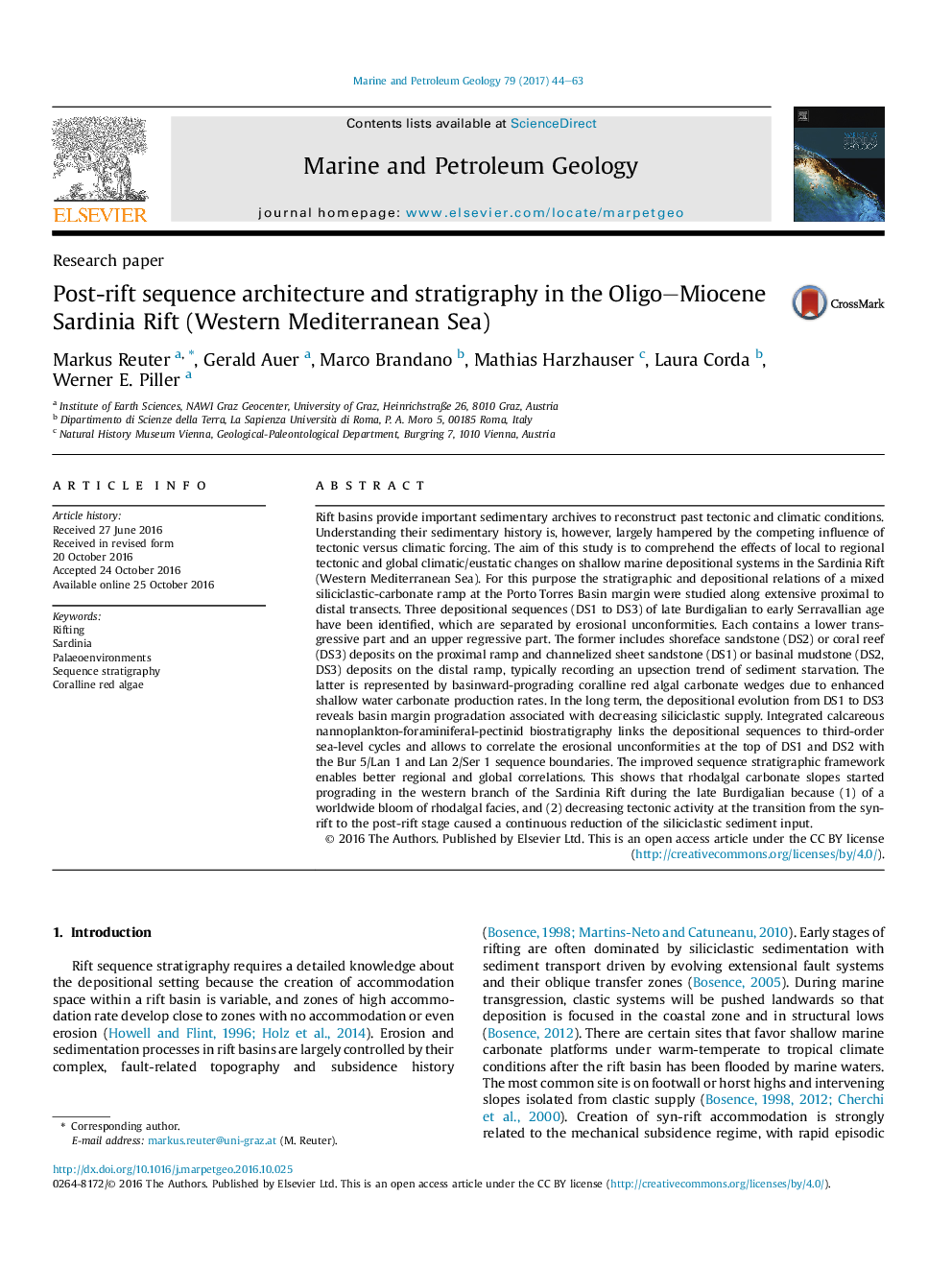| کد مقاله | کد نشریه | سال انتشار | مقاله انگلیسی | نسخه تمام متن |
|---|---|---|---|---|
| 6434298 | 1637148 | 2017 | 20 صفحه PDF | دانلود رایگان |

- The tectonic vs climatic control in Miocene Sardinia Rift basin evolution is studied.
- Sequence stratigraphic and depositional models of the Porto Torres Basin are revised.
- The climatic control is increasing at the transition from the syn-to postrift stage.
- Rhodalgal slope progradation in Sardinia at the onset of the postrift stage.
Rift basins provide important sedimentary archives to reconstruct past tectonic and climatic conditions. Understanding their sedimentary history is, however, largely hampered by the competing influence of tectonic versus climatic forcing. The aim of this study is to comprehend the effects of local to regional tectonic and global climatic/eustatic changes on shallow marine depositional systems in the Sardinia Rift (Western Mediterranean Sea). For this purpose the stratigraphic and depositional relations of a mixed siliciclastic-carbonate ramp at the Porto Torres Basin margin were studied along extensive proximal to distal transects. Three depositional sequences (DS1 to DS3) of late Burdigalian to early Serravallian age have been identified, which are separated by erosional unconformities. Each contains a lower transgressive part and an upper regressive part. The former includes shoreface sandstone (DS2) or coral reef (DS3) deposits on the proximal ramp and channelized sheet sandstone (DS1) or basinal mudstone (DS2, DS3) deposits on the distal ramp, typically recording an upsection trend of sediment starvation. The latter is represented by basinward-prograding coralline red algal carbonate wedges due to enhanced shallow water carbonate production rates. In the long term, the depositional evolution from DS1 to DS3 reveals basin margin progradation associated with decreasing siliciclastic supply. Integrated calcareous nannoplankton-foraminiferal-pectinid biostratigraphy links the depositional sequences to third-order sea-level cycles and allows to correlate the erosional unconformities at the top of DS1 and DS2 with the Bur 5/Lan 1 and Lan 2/Ser 1 sequence boundaries. The improved sequence stratigraphic framework enables better regional and global correlations. This shows that rhodalgal carbonate slopes started prograding in the western branch of the Sardinia Rift during the late Burdigalian because (1) of a worldwide bloom of rhodalgal facies, and (2) decreasing tectonic activity at the transition from the syn-rift to the post-rift stage caused a continuous reduction of the siliciclastic sediment input.
Journal: Marine and Petroleum Geology - Volume 79, January 2017, Pages 44-63